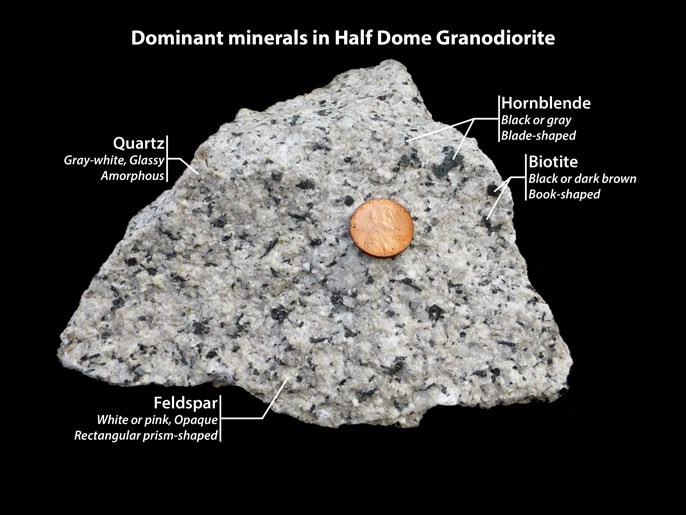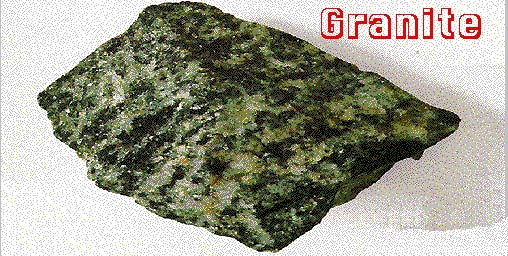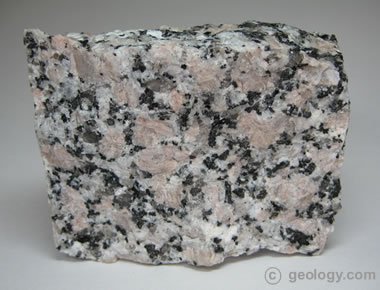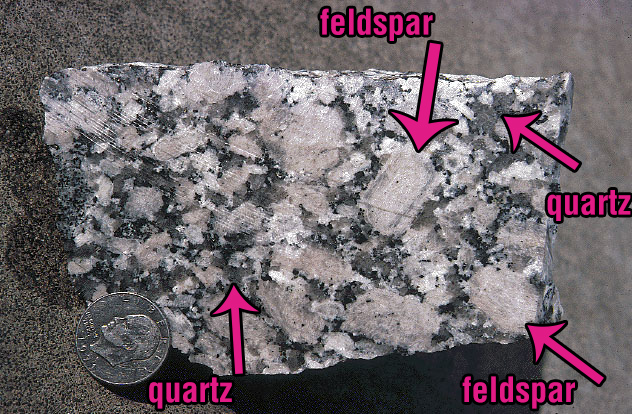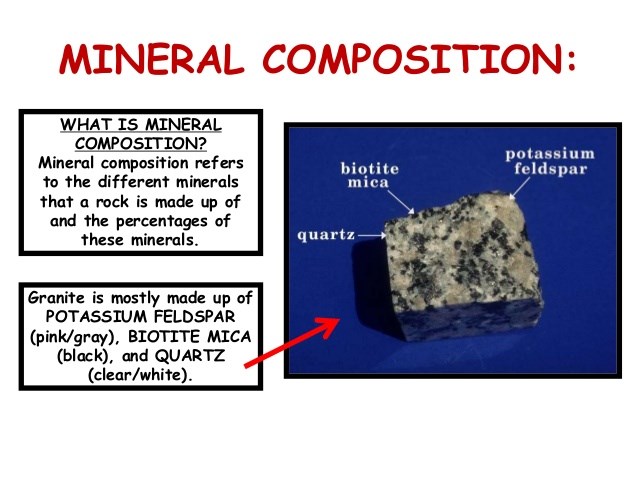The crystals in granite provide a variety of mixed colors feldspar pink or red mica dark brown or black quartz clear pink white or black and amphibole black.
Three minerals found in granite.
These minerals make up more than 80 of the rock.
In some circumstances granite undergoes fractional crystallization a process where slow cooling creates crystals of different minerals as they form at different temperatures.
Granites can be predominantly white pink or gray in color depending on their mineralogy the word granite comes from the latin granum a grain in reference to the coarse grained structure of such a completely crystalline rock.
Other common minerals include mica muscovite and biotite and hornblende see amphibole.
Granite is a coarse grained intrusive rock which contains the minerals quartz and feldspar and usually carries mica or hornblende.
Granite coarse or medium grained intrusive igneous rock that is rich in quartz and feldspar.
Granite is high in quartz about 25 feldspar and mica.
It consists of coarse grains of quartz 10 50 potassium feldspar and sodium feldspar.
Granite is an igneous rock of plutonic origin meaning it formed beneath the surface rather than above ground.
It is the most common plutonic rock of the earth s crust forming by the cooling of magma silicate melt at depth.
The specimen above is a typical granite.
Some examples of igneous volcanic rock are pumice obsidian volcanic glass and scoria and much more.
It is mainly composed of quartz and feldspar although it may contain smaller amounts of other minerals such as mica and amphibole.
Granite ˈ ɡ r æ n ɪ t is a common type of felsic intrusive igneous rock that is granular and phaneritic in texture.
Sheet structure of mica view perpendicular to the sheets.
Quartz is one of the chief minerals produced by igneous action.
Two frequently found micas are dark colored biotite frequently found in granite and light colored muscovite found in the metamorphic rock called schist.
It is made of silica sio 2 the most common molecule in igneous minerals.
Strictly speaking granite is an.
The grain size is coarse enough to allow recognition of the major minerals.
The pink grains are orthoclase feldspar and the clear to smoky grains are quartz or muscovite.
Color variation is a response to the percent of each mineral found in the sample.
Approximately 80 percent of this igneous rock is made up of these two minerals the other minerals found in granite are mica and amphibole.
Granite diorite gabbro and basalt are a few types of igneous rock.
It is about two inches across.
Granite is a light colored plutonic rock found throughout the continental crust most commonly in mountainous areas.
Numerous other minerals can be present in granite.
Mica minerals are usually found in igneous and metamorphic rocks while clay minerals are more often found in sedimentary rocks.




